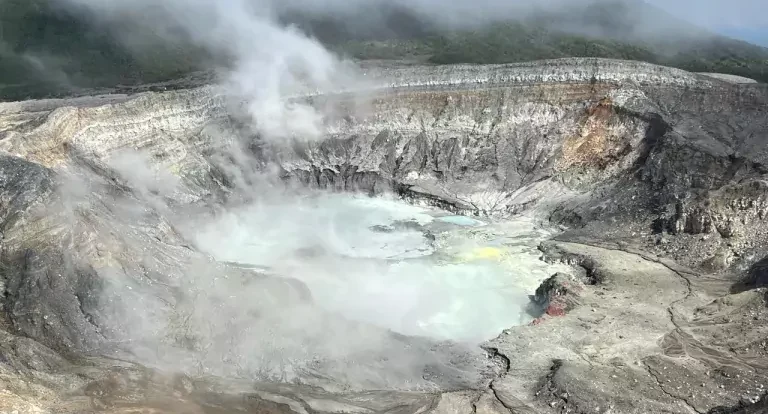The Awakening of Poás Volcano: A Watchful Eye on Nature’s Unpredictability
In the heart of Costa Rica, the Poás Volcano stirs, capturing the attention of volcanologists and locals alike. This Easter week, the volcano showed signs of activity that have kept scientists on their toes, evaluating the potential for sudden changes that are characteristic of any active volcano.
A Historical Perspective: Comparing Cycles of Activity
Current observations suggest that we are not on the brink of a repeat of the 2017 scenario, which saw the volcano closed off during Easter week due to gas emissions reaching up to 1,000 tons daily. This time around, the peak emissions have been recorded at 700 tons, indicating a different pattern of activity.
Marteen de Moor, from the Costa Rican Volcanological and Seismological Observatory (Ovsicori), provides insights into the volcano’s behavior. Following two explosive eruptions on March 29, conduits within the volcano have opened up, facilitating the release of gases from a shallow magma body located about a kilometer deep. This magma body sits above the hydrothermal system and is the source of various gases.
The Invisible Hazards: Gases and Their Effects
High concentrations of sulfur dioxide can pose risks to lungs and the respiratory system, originating from the magma and altered as it passes through the hydrothermal system. The system now filters less efficiently in the absence of a water body, leading to noticeable sulfuric odors in nearby communities. Residents of Sarchí and Zarcero have reported smelling rotten egg odors, a byproduct of hydrogen sulfide gas. Emissions of hydrochloric acid, corrosive in nature, and carbon dioxide have also been detected.
With crater temperatures exceeding 300°C in some areas, sulfur combustion is visible, illuminating the night with its glow. Scientists visiting the volcano on April 2 observed rock fracturing caused by the passage of magmatic gas, a reminder of the dynamic processes at work beneath the surface.
Seismic Activity: A Pulse on the Volcano’s Heart
De Moor notes that while volcanic tremors or earthquakes had increased, they subsided following the two explosive eruptions last Friday. This fluctuation in seismic activity is part of the complex interplay of forces that define Poás’s current state.
Community Anticipation: Life in the Shadow of Poás
As scientists maintain their vigil, communities nestled on the slopes of Poás – Poasito, Sarchí, Zarcero, Grecia, and Naranjo – hold their breath, hoping for the giant to return to slumber. The delicate balance between natural wonder and potential hazard shapes the daily lives of those living in the shadow of Poás Volcano.

